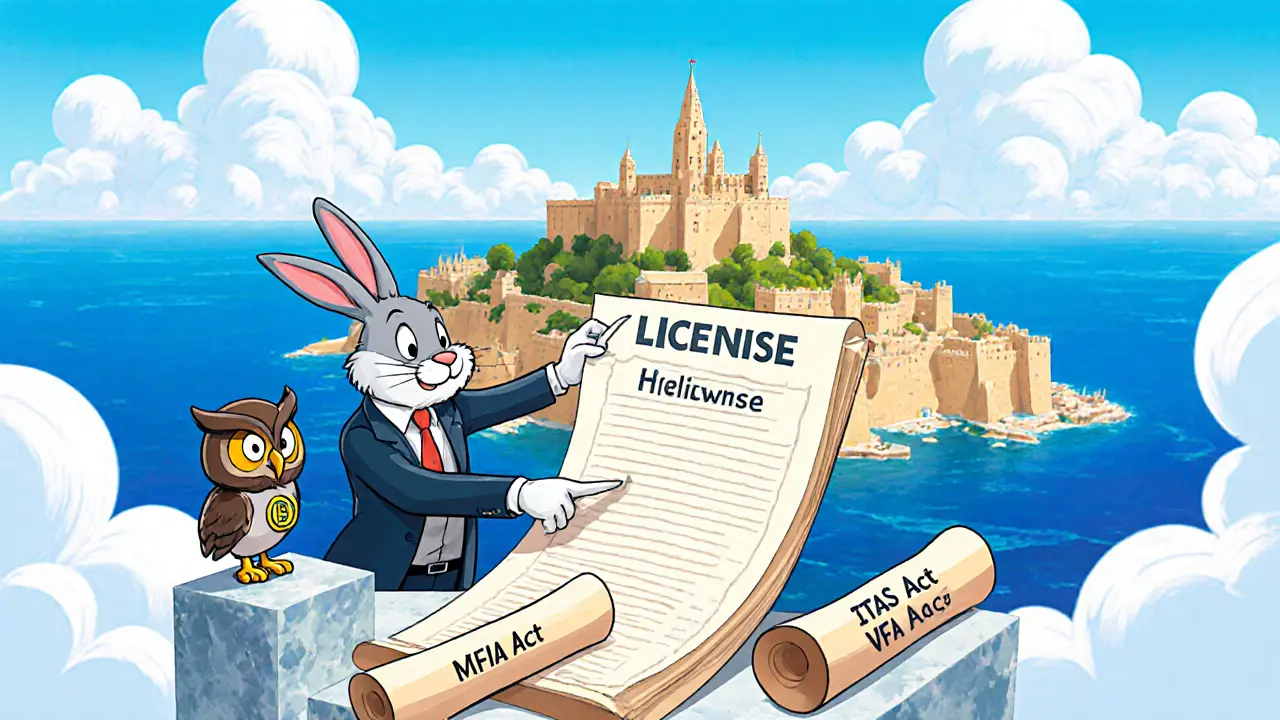Malta Crypto License: What It Is and Why It Matters
When working with Malta crypto license, a regulatory approval that lets crypto businesses operate legally on the island. Also known as the VFA licence, it signals that a company meets the standards set by local authorities and the EU framework. This license is the backbone for exchanges, wallet providers, and token issuers wanting a reputable base in the European market.
Who Grants the License?
The Malta Financial Services Authority (MFSA), the island’s financial regulator is the only body that can issue a crypto licence. MFSA reviews everything from AML policies to technical security measures. Its approval means the project complies with the strict anti‑money‑laundering (AML) rules and can attract institutional partners. In practice, MFSA’s vetting process shapes the entire compliance roadmap for any crypto venture targeting Malta.
One of the core concepts MFSA looks at is the classification of a token as a Virtual Financial Asset (VFA), a digital instrument that falls under Malta’s VFA Act. VFAs include utility tokens, stablecoins, and security‑linked coins. The VFA framework forces issuers to publish a detailed white‑paper, outline investor rights, and set up a governance structure. By treating a token as a VFA, Malta creates a clear legal path that reduces uncertainty for investors and partners alike.
Since early 2024, the European Union’s Markets in Crypto‑Assets regulation (EU MiCA, a continent‑wide set of rules for crypto services) has started to shape how Malta aligns its licensing regime. MiCA requires a uniform consumer‑protection standard, which means MFSA must ensure that any Malta crypto licence also meets EU‑wide disclosure and capital‑reserve requirements. This cross‑border influence pushes local applicants to adopt best‑practice compliance earlier in the process.
Getting the licence is a step‑by‑step journey. First, you draft a comprehensive business plan that details your token model, AML/KYC procedures, and risk‑management framework. Next, you submit an application to MFSA, attaching a VFA white‑paper, audited financial statements, and proof of technical security audits. After an initial review, MFSA may request clarifications or additional documentation, especially if EU MiCA provisions are involved. Once all requirements are satisfied, the authority issues the licence, which is then posted on the public register for transparency.
Understanding how MFSA, VFAs, and EU MiCA interact gives you a realistic picture of what’s required to launch a crypto project in Malta. Below you’ll find a curated set of articles that break down each piece of the puzzle—regulatory overviews, step‑by‑step guides, and real‑world examples that show the licence in action.

Malta Crypto Business License Requirements 2025 - Complete Guide
A 2025‑focused guide covering Malta's crypto licensing rules, license classes, costs, application steps, and future MiCA developments for businesses looking to operate in the EU.